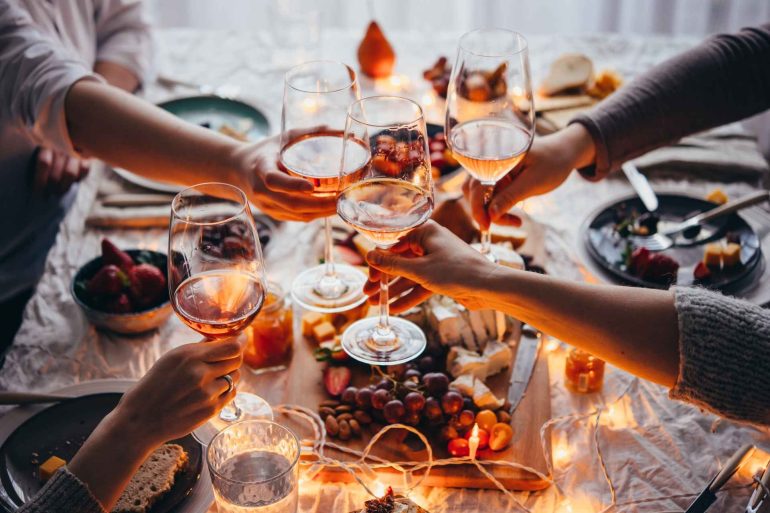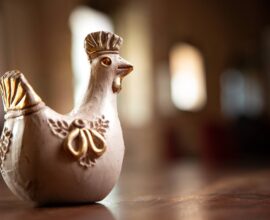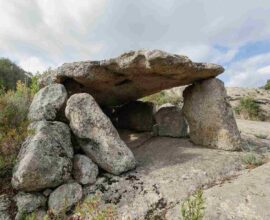Sardinian New Year customs and curiosities
The Sardinian New Year in the name of auspicious traditions
From September to December: the last day of the year in Sardinia, a fabulous “ancient world”.
Right after Christmas, New Year’s Eve is one of the most awaited moments of the year, that special day in which to bid farewell to the old year and welcome the new one, full of good intentions, hopes and dreams.
Just like the rest of Italy, nowadays in Sardinia December 31st is celebrated with a big feast, the midnight toast and fireworks.
However, if we go back in time, we discover how the Sardinian New Year was unique and different, first of all, because the Cabudanni (or Caput Anni) was held in September.
This was, on one hand, due to Byzantine domination and, on the other, to the strong agro-pastoral vocation of the island.
According to the Byzantine calendar, the year began on September 1st and ended on August 31st. In addition, September was the month in which the last phase of pastoral and agricultural activities took place before the winter rest period.
In a society deeply linked to the land and its rhythms, the September New Year was a period of hopes and predictions for a good year: the farmers observed nature, interpreted it, and enacted the rituals aimed at animal health and a good harvest.
The beliefs, popular customs and traditions of the Sardinian New Year in December
With the shift of the calendar in modern times, even in Sardinia, the New Year moved to the last day of December.
The moment of transition between the old and the new remained full of beliefs, rituals and popular traditions.
In Nuoro, for example, the custom “de su Candelà rju” (called “Su candelarzu” in Northern Sardinia and “Sa Candelaria” in the village of Orgosolo) was widespread. On December 31st the children gathered in small groups and went around the streets to ask for offerings for the poor equipped with “sacchettas” (or “sacchittas”), white pillowcases carried on their shoulders like saddlebags.
As offerings they received chestnuts, dried figs, almonds, hazelnuts and traditional breads: “sas rughittas“, in the shape of a cross, “su capidu e s’annu“, oval-shaped with “sas ficcas“, twelve holes and small rings of good luck, to symbolize the months of the new year, and “s’accheddu“, small spiral-shaped bread sticks.
In Loguodoro, a ritual bread linked to the New Year is the “cabude“, of pre-Christian origin, when the beginning of the agricultural year was celebrated in September. It was prepared with sourdough, fine semolina, salt and water and had the peculiarity of having different shapes according to the craft of those who received it.
As a good omen, the head of the family broke the most voluminous bread on the head of the younger male son.
Another custom, widespread in particular in Barbagia, was divination, an art in which women were masters. New Year’s Eve was considered the most propitious time to ask fate important questions about the future.
Still in Barbagia, it was practised “su giogu ‘e sos olzoso” to understand if two people truly loved each other and if their relationship would continue even in the coming year.
To start the game, a basin was taken and filled with water: a “reel” was created with a finger and two grains of barley named after the two lovers were thrown in.
After some time a grain would stop on one side of the container, if the other grain stopped at the same point, it meant that the two really loved each other, otherwise, if it continued to turn alone or stopped far away, love would have lasted very little.
When meeting someone along the way or visiting relatives, it was customary to greet each other with the phrase “A Sa Noa! ” or “See you in the new year” to which the answer was “Deus bollat! “, that is, “God willing!”
Finally, the propitiatory rite of the first of January was the cooked wheat, “su trigu cotu”, linked to peasant culture.
After cleaning the wheat from the chaff and pebbles on the morning of December 31st, it was soaked for about twelve hours. In the evening it was boiled and, once cooked, it was placed in a pot wrapped with a warm blanket and straws.
On the morning of the first of January, it was served for breakfast with warm sheep’s milk and, for a prosperous year, everyone had to partake.
Would you like to experience the magic of New Year’s Eve in Sardinia and enjoy a fabulous holiday in an authentic paradise? Discover Forte Village Resort in Sardinia






